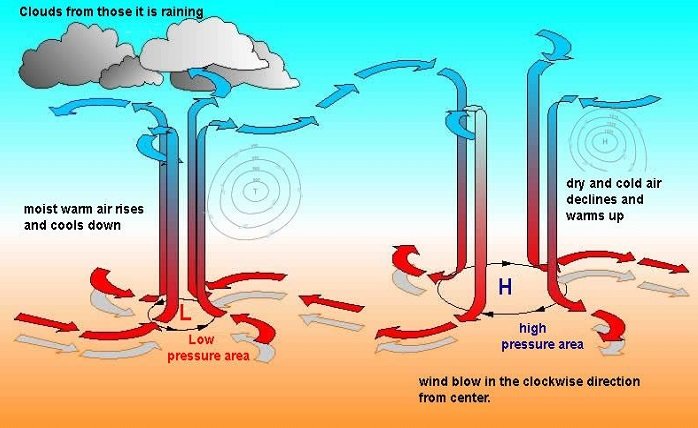First of all,
In the field of meteorology, low-pressure zones frequently arouse curiosity and anxiety in both people and groups. These meteorological occurrences can have a big impact on the local weather and even can intensify into stronger storms. We explore the realm of low-pressure area news in this blog article, illuminating its significance, ramifications, and impact on our daily lives.
What is a Low-Pressure Area?
A low-pressure area, also known as a depression, is defined as an area with lower atmospheric pressure than its surroundings. Unpredictable weather patterns, including clouds, winds, and precipitation, frequently link these regions.
Identifying Low-Pressure Areas
Also referred to as depressions, low-pressure areas are parts of the atmosphere where the surrounding air pressure is lower. Usually, they originate when warm air rises and creates a vacuum that pulls in colder air. Cloud formation, precipitation, and atmospheric instability are the results of this process.
Features and Behaviour
Areas of low pressure are characterized by certain features such as cyclonic circulation, converging winds, and upward air motion. They can range in size and intensity, from minor disruptions to massive weather systems like hurricanes and tropical storms. Meteorologists must comprehend their behavior to forecast weather patterns and issue pertinent cautions.
Impact on Weather Patterns
Low-pressure zones significantly influence local weather conditions. They frequently bring rain, gloomy skies, and occasionally thunderstorms. They can result in extended periods of bad weather or help generate stronger storms, depending on their strength and position. Monitoring low-pressure systems is crucial for assessing potential risks and implementing suitable safety precautions.
Forecasting Low-Pressure Areas
Meteorologists use a variety of instruments and methods to forecast the development and migration of low-pressure zones. These consist of atmospheric data analysis, weather models, and satellite photography. Forecasters assist communities in being ready for upcoming weather events by monitoring atmospheric conditions and detecting critical indications, which enable them to issue timely warnings and recommendations to the public.
Implications for Society and Economy
Low-pressure zones have effects that go beyond disturbances brought on by the weather. These systems have the potential to produce severe storms that seriously harm property, agriculture, and infrastructure. Risks to life and livelihoods include flooding, high winds, and storm surges, underscoring the significance of resilience and preparedness measures.
Reaction and preparedness
Governments, emergency services, and communities take precautions to reduce hazards and safeguard vulnerable populations in reaction to news and projections about low-pressure areas. They may include plans for evacuation, fortification of infrastructure, and public awareness initiatives to foster safety and resilience.
Safety and Preparedness
Understanding the possible consequences of low-pressure systems is essential for maintaining public safety. This section offers preparation advice for unfavorable weather conditions linked to low-pressure zones.
Conclusion
Areas of low pressure are essential in determining our weather. We can appreciate the dynamic nature of our atmosphere and better prepare for its effects by having a better understanding of these systems.
FAQ
What distinguishes high-pressure locations from low-pressure places?
Areas having lower air pressure than their surroundings are known as low-pressure areas, and they are usually connected to overcast skies and precipitation. High-pressure regions, on the other hand, have higher air pressure and are frequently linked to a clear sky and pleasant weather.
What gives rise to an area of low pressure?
The meeting of several air masses, surface heating, or topographical features like mountains might cause the formation of low-pressure zones.
What effects do low-pressure zones have on the weather?
Because they cause moist air to rise, they can cause clouds, precipitation, and stormy weather.
Why is monitoring low-pressure systems important?
By monitoring these systems, meteorologists can provide more precise weather forecasts, which are crucial for anticipating and lessening the effects of severe weather events.





















